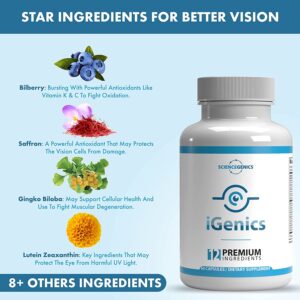Your eyes are one of the most precious organs in your body, yet they are also among the most vulnerable. In today’s digital era, where screen time is at an all-time high, millions of people struggle with vision problems like eye strain, dryness, nearsightedness, and age-related issues. While corrective lenses and surgeries are common solutions, many people search for natural alternatives.
The good news is that there are safe and effective ways to improve eyesight naturally. From time-tested home remedies to scientifically proven habits, you can strengthen your vision, reduce discomfort, and protect your eyes for years to come.
This comprehensive guide covers how to improve eyesight naturally through lifestyle changes, nutrition, exercises, and traditional remedies that actually work.
Why Natural Eye Care Matters
Our eyes face daily challenges:
- Digital Eye Strain (Computer Vision Syndrome): Caused by long hours on screens.
- Blue Light Exposure: May damage retinal cells and disrupt sleep cycles.
- Aging Eyes: Conditions like presbyopia, cataracts, and macular degeneration increase with age.
- Poor Lifestyle Habits: Smoking, poor diet, and lack of sleep can weaken vision.
By adopting natural eye care strategies, you not only improve clarity but also reduce long-term risks to your eye health.
Proven Tips to Improve Eyesight Naturally
1. Practice Eye Exercises
Just like any other muscle, your eyes benefit from regular exercise. Eye workouts increase blood flow and flexibility.
- Palming: Rub your hands together and place them over closed eyes for relaxation.
- Focus Shifting: Alternate focus between a near object (like your thumb) and something far away.
- Figure Eight: Trace a sideways “8” with your eyes to enhance flexibility.
2. Follow the 20-20-20 Rule
Every 20 minutes, look at something 20 feet away for at least 20 seconds. This simple practice reduces digital eye strain and gives your eyes a chance to rest.
3. Get Adequate Sleep
Your eyes repair themselves while you sleep. Lack of sleep leads to red, dry, and blurry vision. Aim for 7–9 hours of quality rest to keep your eyes refreshed.
4. Blink More Often
People blink less when using digital devices, which leads to dryness. Consciously increase blinking to keep eyes lubricated and reduce irritation.
5. Limit Screen Time and Use Blue Light Filters
Too much screen exposure accelerates eye strain. Use blue-light-blocking glasses or enable night mode on devices to protect your eyes.
Best Foods to Improve Eyesight Naturally
Nutrition plays a vital role in eye health. Include these foods in your daily diet:
- Carrots and Sweet Potatoes: Rich in beta-carotene (Vitamin A) for night vision.
- Leafy Greens (Spinach, Kale): High in lutein and zeaxanthin to protect against macular degeneration.
- Fatty Fish (Salmon, Tuna, Sardines): Packed with omega-3 fatty acids to prevent dry eyes.
- Citrus Fruits (Oranges, Grapefruit): Provide vitamin C, a powerful antioxidant.
- Nuts and Seeds (Almonds, Sunflower Seeds): Excellent sources of vitamin E to combat free radicals.
- Eggs: Contain zinc and carotenoids essential for eye health.
Home Remedies to Improve Eyesight
1. Warm and Cold Compress
- A warm compress soothes strained eyes.
- A cold compress reduces puffiness and irritation.
2. Rose Water Drops
Rose water is a natural coolant that reduces redness, itching, and eye fatigue. Apply a few drops or use cotton pads soaked in rose water over closed eyes.
3. Aloe Vera Juice
Rich in antioxidants, aloe vera supports overall eye health. Drinking a small amount of fresh aloe vera juice regularly can provide anti-inflammatory benefits.
4. Triphala Eye Wash (Ayurvedic Remedy)
Triphala, an Ayurvedic blend of herbs, is often used as an eye wash to cleanse and refresh tired eyes.
5. Fennel Seeds Tea
Fennel seeds are known to improve eyesight naturally. Drinking fennel tea or including fennel in your diet supports vision.
Lifestyle Habits for Better Vision
- Stay Hydrated: Water prevents dry eyes and flushes toxins.
- Quit Smoking: Smoking accelerates macular degeneration and cataract formation.
- Protect Eyes from UV Rays: Wear sunglasses outdoors to block harmful UVA and UVB rays.
- Manage Chronic Conditions: Diabetes, hypertension, and obesity all increase risks of vision loss.
- Regular Eye Checkups: Early detection prevents serious complications.
Natural Supplements for Vision Support
While diet should come first, supplements can provide an extra layer of protection. Some proven ones include:
- Lutein & Zeaxanthin: Filter harmful light and protect the retina.
- Omega-3 Fatty Acids: Reduce inflammation and dryness.
- Vitamin C & E: Strong antioxidants for preventing age-related eye problems.
- Zinc: Supports retinal function and night vision.
- Bilberry Extract: Improves circulation and night vision.
Myths About Improving Eyesight Naturally
- Myth: Eating carrots alone will restore perfect vision.
- Truth: Carrots help with vitamin A but cannot cure serious eye conditions.
- Myth: Eye exercises can fix refractive errors like myopia.
- Truth: Exercises reduce strain but cannot fully correct nearsightedness or farsightedness.
- Myth: Glasses make eyes weaker.
- Truth: Glasses correct vision; they do not damage eyesight.
Final Thoughts
Learning how to improve eyesight naturally is about adopting a holistic approach—combining nutrition, lifestyle habits, home remedies, and eye care practices. While natural methods may not completely replace medical treatments for severe conditions, they can greatly enhance eye comfort, slow down degeneration, and strengthen overall vision health.
By eating eye-friendly foods, practicing simple exercises, protecting against blue light and UV rays, and considering natural supplements, you can take powerful steps to maintain clear and sharp vision for years to come.
Your eyesight is worth protecting—start today with these proven tips and remedies to see the world more clearly, naturally.
==> US Doctor says: “Do this every morning to REVERSE vision loss”

